Remember when gaming was all about pixelated graphics and dial-up connections? Counter-Strike 1.6, released in 2003, wasn’t just another first-person shooter. It was a revolution that shaped the future of online gaming.
This Half-Life mod turned cultural phenomenon left an indelible mark on the gaming world, and its iconic banners and game icons are still etched in our memories. Let’s dive into the legacy of CS 1.6 and explore how its visual identity became the stuff of legend.
The Birth of a Gaming Icon
Counter-Strike 1.6 didn’t just appear out of thin air. It evolved from a mod into a standalone game that captured the hearts of millions. The game’s icon, with its bold orange and black design featuring a soldier’s silhouette, became instantly recognizable. This simple yet powerful image represented more than just a game – it was a badge of honor for a global community united by their love for tactical combat.
For many of us, that icon on our desktop was a portal to countless hours of intense gameplay. It wasn’t just about the adrenaline rush of defusing bombs or rescuing hostages. CS 1.6 was about strategy, teamwork, and the thrill of outsmarting your opponents. The game icon served as a constant reminder of the epic battles and unforgettable moments that awaited us.
The Role of Game Icons in Counter-Strike 1.6
In the early 2000s, game icons were more than just shortcuts on your desktop. They were your first point of contact with the game, building anticipation before you even clicked “Play”. The CS 1.6 icon, with its distinct design, stood out among the sea of other game icons. It was a symbol that represented a community, a competitive spirit, and a shared passion for gaming.
The simplicity of the CS 1.6 icon made it easily identifiable, even at a glance. This was crucial in an era when LAN parties were all the rage. Spotting that orange and black icon on someone’s desktop instantly sparked conversations and connections. It was a visual cue that said, “Hey, I’m part of this global gaming phenomenon too!”
Banners: A Visual Representation of Community and Competition
If the game icon was the face of CS 1.6, then the banners were its war flags. These visual elements played a crucial role in the competitive scene, adorning tournaments, clan matches, and community events. They weren’t just decorative; they were powerful tools for brand identity and community building.
Imagine walking into a LAN tournament and seeing rows of computers, each displaying a unique team banner. These banners, often featuring team logos, colors, and sometimes even slogans, were a source of pride and intimidation. They set the tone for matches before a single shot was fired, boosting team morale and psyching out opponents.
The Art of Custom Banners
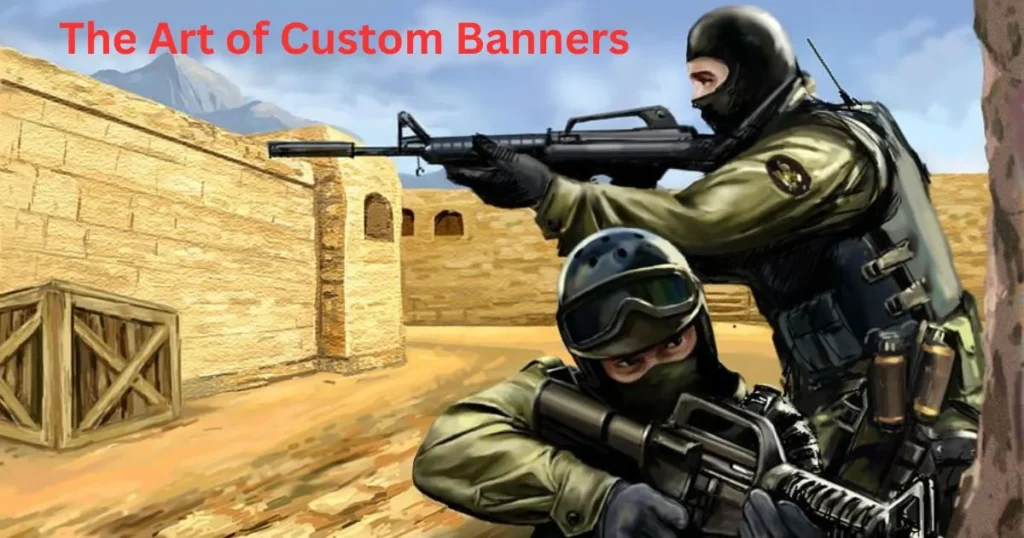
Custom banners in CS 1.6 were where creativity met competition. Teams and clans would spend hours crafting the perfect banner to represent their identity. It wasn’t just about looking cool – a well-designed banner could become synonymous with a team’s reputation and legacy.
Remember the iconic banners of teams like SK Gaming or fnatic? These weren’t just images; they were symbols of excellence that struck fear into the hearts of opponents. For aspiring players, having your own custom banner was a rite of passage, a sign that you were serious about your place in the CS 1.6 community.
The Evolution of Visual Identity in Counter-Strike 1.6
As CS 1.6 grew in popularity, so did the sophistication of its visual elements. What started as simple designs evolved into complex artwork that pushed the boundaries of creativity within the game’s limitations. This evolution wasn’t just driven by the developers – the community played a massive role in shaping the visual landscape of CS 1.6.
Modders and artists within the community began creating custom skins, maps, and even game modes, each with their unique visual flair. This community-driven content added layers of personalization to the game, allowing players to express their individuality while still being part of the larger CS 1.6 family.
The Rise of Community-Created Content
The CS 1.6 community didn’t just play the game – they shaped it. Custom maps like de_dust2 and cs_office became legendary, each with its own iconic visuals that are still recognizable today. These community creations often surpassed the original content in popularity, showcasing the power of user-generated content long before it became an industry buzzword.
This collaborative approach to game design fostered a sense of ownership among players. It wasn’t just Valve’s game anymore – it was our game, and we were all contributing to its legacy in our own ways.
Nostalgia and the Enduring Appeal of Counter-Strike 1.6 Visuals
Close your eyes and picture the CS 1.6 menu screen. Can you see it? That simple, no-frills interface holds a special place in the hearts of millions of gamers. It’s not just nostalgia – it’s a connection to a time when online gaming was simpler, yet somehow more engaging.
The visuals of CS 1.6, from its game icon to its in-game graphics, have an enduring appeal that transcends generations. Even gamers who never played the original CS 1.6 recognize its iconic elements, thanks to memes, fan art, and the lasting influence it has had on the gaming industry.
More Than Just Memories
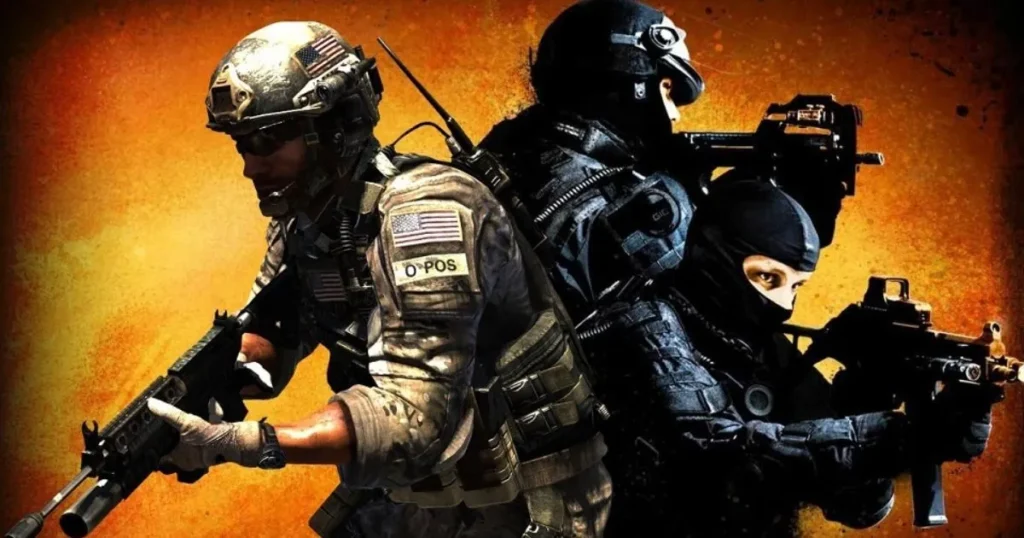
The nostalgia associated with CS 1.6 visuals isn’t just about remembering the good old days. It’s about recognizing the foundations upon which modern gaming was built. Those pixelated graphics and simple designs taught us the importance of gameplay over visual flair, a lesson that many modern games could learn from.
Today, seeing a CS 1.6 banner or icon doesn’t just remind us of a game – it reminds us of late-night gaming sessions, the friends we made, and the communities we were part of. It’s a visual time machine that takes us back to the early days of online gaming.
The Influence of Counter-Strike 1.6 on Modern Game Design
The legacy of CS 1.6 extends far beyond its active player base. Its influence can be seen in countless modern games, particularly in the realm of competitive multiplayer titles. The emphasis on clear, recognizable visual elements that CS 1.6 popularized has become a standard in the industry.
Look at games like Dota 2, League of Legends, or Overwatch. While their graphics are leagues ahead of CS 1.6, they all share a common thread – the importance of distinct visual identities for characters, teams, and in-game elements. This isn’t a coincidence; it’s a direct result of the lessons learned from CS 1.6’s success.
Lessons in User Interface Design
The user interface of CS 1.6 was simple, functional, and effective. Modern game designers have taken this lesson to heart, creating UIs that prioritize clarity and ease of use, even in the most complex games. The buy menu in CS 1.6, for instance, was a masterclass in efficient design – something that many modern games still strive to emulate.
Moreover, the customization options that CS 1.6 popularized have become a staple in modern gaming. The ability to personalize your gaming experience, from custom sprays to unique weapon skins, can be traced back to the creativity and innovation of the CS 1.6 community.
Read Also About: Halo (2003) Game Icons Banners: Unveiling the Legacy
The Psychology Behind CS 1.6’s Visual Appeal
Ever wonder why those pixelated graphics still tug at our heartstrings? The visual elements of Counter-Strike 1.6 weren’t just about looks – they tapped into something deeper. The simple, yet distinct designs created a strong sense of identity and belonging among players.
Think about it – when you saw that terrorist or counter-terrorist model, you instantly knew your role. The clear visual distinction between teams wasn’t just about gameplay; it fostered a sense of camaraderie with your teammates and friendly rivalry with opponents. This psychological impact of CS 1.6’s visuals played a huge role in its addictive nature and community-building power.
From Pixels to Polygons: The Technical Evolution
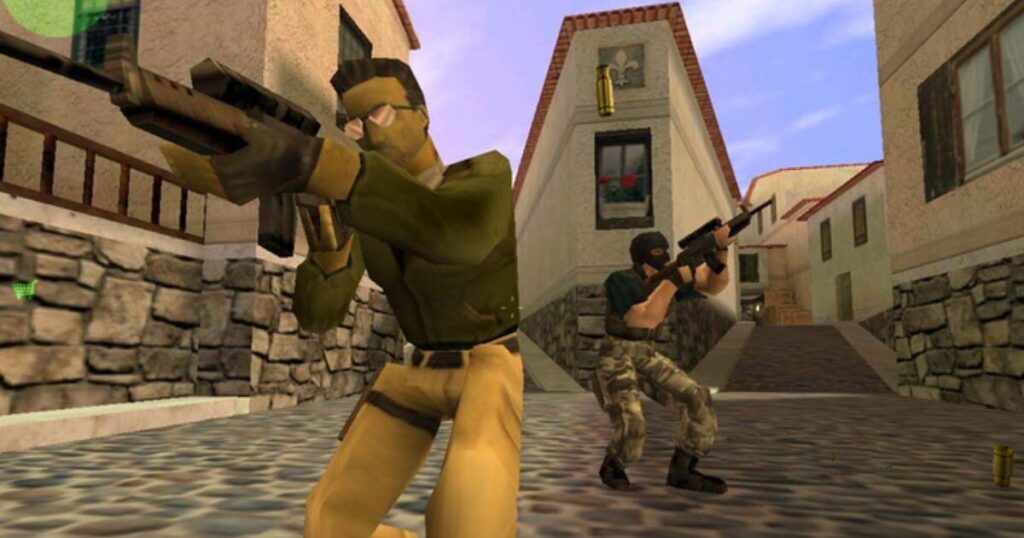
Let’s geek out for a moment about the technical side of CS 1.6’s visuals. Working within the constraints of early 2000s technology, the developers created a visual style that was both functional and memorable. The low-poly models and simple textures weren’t just a limitation – they became a signature style.
As hardware capabilities improved, CS 1.6 didn’t just jump on the high-resolution bandwagon. Instead, it maintained its distinct visual identity while making subtle improvements. This balance between familiarity and progress kept players coming back, even as more graphically advanced games hit the market.
The Sound of Visuals: Audio-Visual Synergy in CS 1.6
We can’t talk about CS 1.6’s visual legacy without mentioning its iconic sounds. The visual and audio elements worked in perfect harmony to create an immersive experience. Remember the distinct sound of an AWP shot echoing through de_dust? That audio cue was as much a part of the game’s visual landscape as the map itself.
This synergy between visuals and audio set a standard for future games. It taught developers the importance of creating a cohesive sensory experience, where what you see and what you hear work together to enhance gameplay and immersion.
The Global Impact: CS 1.6 Across Cultures
One of the most remarkable aspects of CS 1.6’s visual identity was its universal appeal. Whether you were playing in a Korean PC bang or a Brazilian LAN house, the game’s visuals spoke a language everyone understood. This global visual language helped CS 1.6 transcend cultural barriers, creating a truly international gaming community.
The game’s simple yet effective visual communication – from map layouts to weapon icons – made it accessible to players regardless of their native language. This universal design approach has since become a hallmark of successful global multiplayer games.
Learning from Limitations: The Beauty of Constraints
CS 1.6’s development was a masterclass in working within limitations. The game’s visuals weren’t flashy by today’s standards, but they were incredibly effective. This teaches us a valuable lesson about game design – sometimes, less is more.
The constraints forced developers and community modders to be creative. They couldn’t rely on fancy graphics to impress players, so they focused on creating visually clear, functionally sound designs. This approach resulted in maps, models, and UI elements that prioritized gameplay over graphical flair – a principle that many modern game designers are returning to.
The Modding Renaissance: Community-Driven Visual Evolution
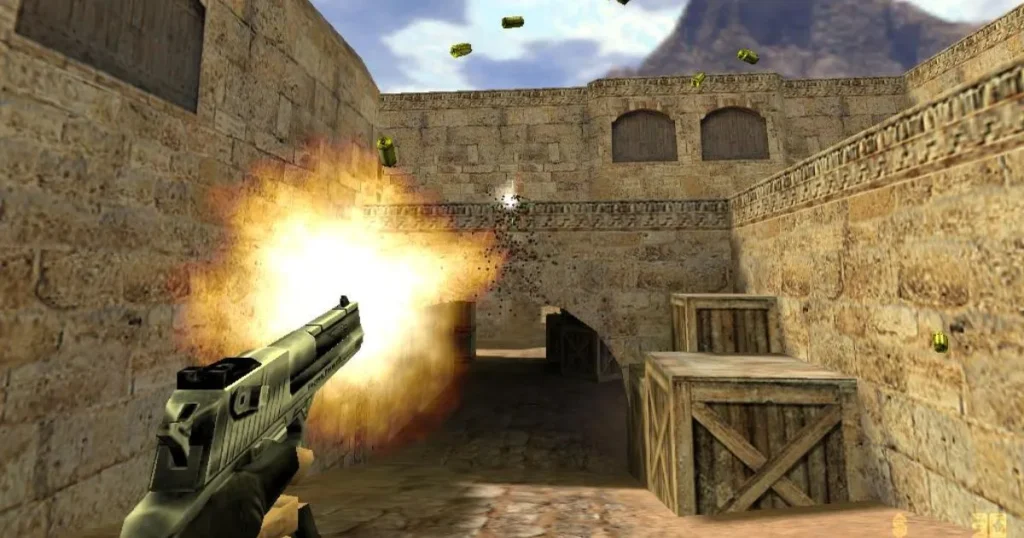
The modding scene in CS 1.6 was nothing short of revolutionary. It wasn’t just about creating new maps or tweaking gameplay mechanics. Modders pushed the boundaries of what was visually possible within the game’s engine, creating custom skins, entirely new visual themes, and even total conversions.
This vibrant modding community didn’t just extend the life of CS 1.6; it became a training ground for future game developers. Many of today’s leading game designers cut their teeth creating mods for CS 1.6, learning valuable lessons about visual design, user experience, and community engagement.
The Esports Aesthetic: How CS 1.6 Shaped Competitive Gaming Visuals
Counter-Strike 1.6 didn’t just popularize competitive gaming; it defined how esports should look. The spectator-friendly visual design made it easy for audiences to follow the action, even if they weren’t players themselves. Team logos, player avatars, and in-game overlays all contributed to creating a visual language for esports.
This esports aesthetic has evolved over the years, but its roots can be traced back to CS 1.6. The clean, informative visual style set the standard for how competitive games should present information to both players and spectators.
The Lasting Impact on Competitive Gaming
Counter-Strike 1.6 didn’t just influence game design – it laid the groundwork for modern esports. The competitive scene that grew around CS 1.6, with its team banners, tournament structures, and spectator-friendly gameplay, set the stage for the multi-million dollar esports industry we see today.
The visual elements of CS 1.6, from team logos to player avatars, showed the world how gaming could be as visually engaging for spectators as traditional sports. This lesson hasn’t been lost on modern esports organizers, who put significant effort into creating visually appealing broadcasts and events.
Preserving the Legacy: CS 1.6 in the Modern Era
While Counter-Strike has evolved with newer versions like CS:GO and CS2, the original 1.6 version still holds a special place in gaming history. Efforts to preserve and celebrate its legacy are ongoing, with retro tournaments, community-run servers, and even museums dedicated to early online gaming.
These preservation efforts aren’t just about maintaining old software – they’re about keeping alive the spirit of innovation, community, and competition that CS 1.6 embodied. By looking back at the visual elements that made CS 1.6 special, we gain valuable insights into what makes games truly timeless.
The Future Inspired by the Past
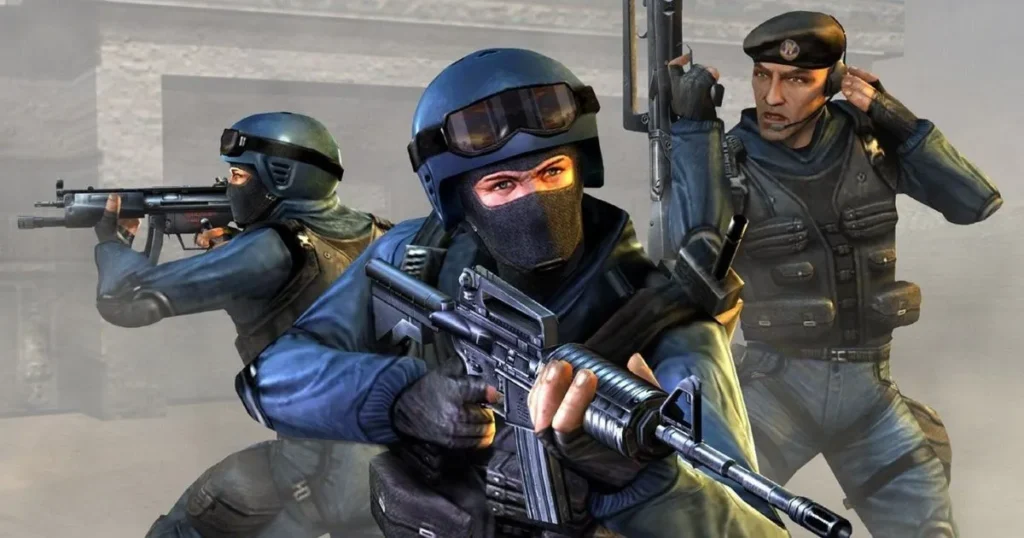
As we look to the future of gaming, it’s clear that the lessons learned from CS 1.6 will continue to shape the industry. The importance of strong visual identities, community-driven content, and clear, functional design are as relevant today as they were in 2003.
New technologies like virtual and augmented reality are opening up exciting possibilities for game design. But as we embrace these new frontiers, the principles that made CS 1.6’s visuals so iconic – simplicity, clarity, and community engagement – will undoubtedly play a crucial role in shaping the games of tomorrow.
Read Also About: Fintechzoom GME Stock 0% 10K Vol: Understanding GameStop’s Market Dynamics
FAQ’s
Does Counter-Strike 1.6 still exist?
Yes, Counter-Strike 1.6 still exists. It’s playable on Steam. Many dedicated servers and communities continue to support the game. Some players prefer it over newer versions for its classic gameplay and nostalgia factor.
Is Counter-Strike 1.6 free to download?
No, Counter-Strike 1.6 is not free to download. It’s available for purchase on Steam. The game is often on sale at a low price. Some websites offer free versions, but these are unofficial and may be unsafe.
What is the oldest version of CS?
The oldest version of Counter-Strike is Beta 1.0. It was released on June 19, 1999. This version was a mod for Half-Life. It laid the foundation for all future Counter-Strike games.
What is Counter-Strike 1.6 full name?
The full name is simply “Counter-Strike 1.6”. The “1.6” refers to its version number. It’s the last major update of the original Counter-Strike game. Some people mistakenly call it “Counter-Strike: 1.6”, but there’s no colon in the official title.
Conclusion
Counter-Strike 1.6 wasn’t just a game; it was a revolution. Released in 2003, this Half-Life mod turned cultural phenomenon left an indelible mark on gaming. Its iconic orange-and-black logo became a symbol of online gaming’s early days.
Custom banners and team logos fostered a sense of community and rivalry. The game’s simple yet effective visuals set standards for modern game design. CS 1.6’s influence extends beyond nostalgia, shaping competitive gaming and esports aesthetics.
It proved that great gameplay trumps flashy graphics. The modding scene birthed future game developers. Today, CS 1.6’s legacy lives on, reminding us that sometimes, less is more in game design.


